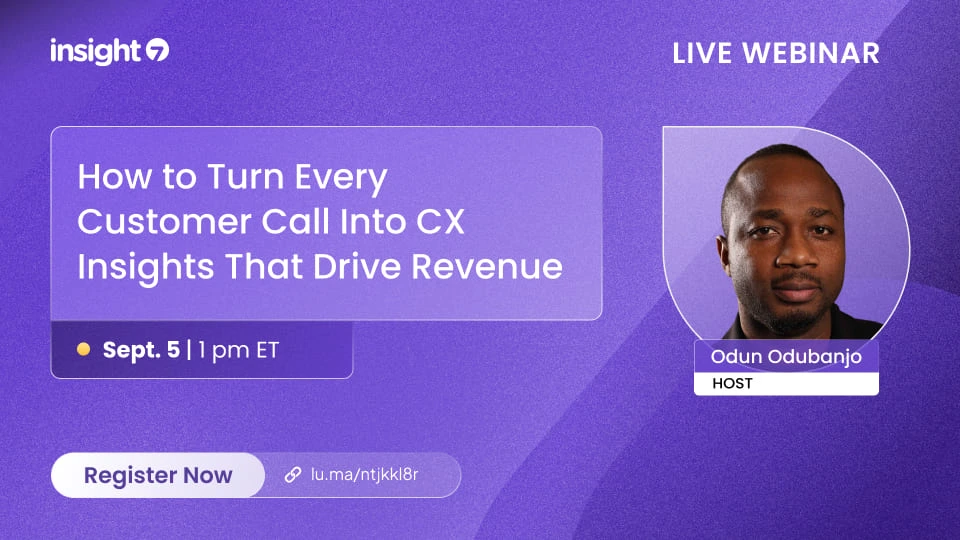How to Analyze Product Interviews
-
Bella Williams
- 10 min read
In a world where data-driven decisions can make or break a product, effective analysis of user interviews is essential. The right interview analysis techniques can transform raw customer insights into actionable strategies. Understanding these techniques not only helps identify user needs and preferences but also allows businesses to tailor their offerings, setting them apart from the competition.
When you delve into interview analysis, acknowledging the nuances in user feedback is key. Techniques such as theme identification and categorizing responses provide clarity amidst the chaos of diverse opinions. By mastering these methods, you can ensure that every customer voice contributes valuable insights that drive product development and enhance user satisfaction.
Generate visualizations from your qualitative data. At Scale.

Understanding Interview Analysis Techniques for Product Insights
Effective interview analysis techniques are vital for transforming customer conversations into actionable product insights. Understanding these techniques helps teams to systematically capture and interpret customer feedback, identifying valuable themes that can inform product development. To begin, it’s essential to gather insights from interviews and recognize patterns, noting recurring topics or sentiments that emerge. This process enables organizations to see beyond individual responses and grasp the overall customer sentiment, leading to better strategic decisions.
Next, it’s crucial to categorize and prioritize the collected feedback. By classifying insights according to their relevance and impact, teams can address the most significant issues and opportunities first. Using specific frameworks, like affinity mapping or thematic analysis, aids in organizing this data effectively. Ultimately, mastering these interview analysis techniques allows companies to stay responsive to customer needs, aligning product offerings with market demands and ensuring long-term success.
Identifying Key Themes and Patterns
To effectively analyze product interviews, it's crucial to identify key themes and patterns within the data collected. Start by organizing all interview transcripts in a systematic way. This preparation allows you to highlight recurring topics, concerns, and insights voiced by participants. Consider using a method like thematic coding, where you categorize responses based on shared ideas or sentiments. This method not only streamlines the analysis process but also provides a clearer view of customer feedback.
Once you have extracted themes, it’s time to look for patterns that emerge across various interviews. Analyze how frequently specific topics or issues arise, and determine whether certain demographics express particular needs uniquely. For instance, if 80% of respondents mention a common pain point, you know it’s a significant area for improvement. By visualizing this data through reports or dashboards, stakeholders can grasp the broader implications and make informed decisions rooted in user feedback.
Categorizing and Prioritizing Feedback
When it comes to categorizing and prioritizing feedback from interviews, you first need to sift through myriad responses to identify key insights. Start by organizing the feedback into broad categories such as positive comments, negative experiences, suggestions, or requests for features. This initial categorization helps in visualizing the data, making it easier to see emerging patterns and prevalent themes. You can create visual aids, such as charts or tables, to distinguish these categories effectively.
Once categorized, prioritize the feedback based on its relevance and impact. For instance, focus on comments that reflect the most significant pain points experienced by users. Assign scores to different feedback items based on factors like frequency, severity, and feasibility of addressing the issues raised. By applying these interview analysis techniques, you can direct your attention to the most pressing concerns, ensuring that your product development aligns closely with user needs and expectations.
Evaluate Performance on Customer Calls for Quality Assurance.
Practical Steps for Effective Interview Analysis Techniques
Effective interview analysis techniques begin with transcription and preparation. Accurate transcripts allow you to revisit the conversation without bias or memory interference. Settle on a consistent format to streamline future reviews and ensure clarity. Next, focus on the coding process, which involves identifying common themes and patterns within the transcripts. This step enhances your ability to sift through large amounts of data efficiently, making it easier to draw connections and spot trends.
Once coding is completed, it's crucial to draw meaningful conclusions from your analysis. Integrate insights from your coded data to form actionable recommendations. Such recommendations can include refining product features or adjusting marketing strategies. Regularly collaborate with team members throughout the analysis process to incorporate diverse perspectives, solidifying your findings. Through these practical steps, you can transform raw interview data into valuable insights for your product development journey.
Step 1: Transcription and Preparation
Transcribing and preparing interview data is a crucial first step in any effective analysis. The goal is to create an accurate and comprehensive record of the conversations you've had, as this will be the foundation for further insights. Begin by recording audio files of the interviews. Once recorded, proceed with transcription, ensuring that each detail is captured accurately. This process may be facilitated by transcription software or manual transcription, depending on the resources available to you.
After transcription, organize the data for easy access and comprehension. Create a library where all transcripts are stored systematically, allowing for quick retrieval when needed. This organization aids in identifying key themes and patterns in the data later on. By preparing your transcripts in this way, you set the stage for successful interview analysis techniques, ultimately leading to more reliable insights that can inform your product development process.
Step 2: Coding for Common Themes
In the second step of your interview analysis techniques, coding for common themes is crucial. This process involves manually sifting through the transcripts of your interviews to identify recurring ideas and sentiments expressed by participants. Start by organizing the data based on specific periods, such as a monthly review, to highlight trends and patterns that may emerge over time.
Once you compile the data, use a thematic matrix to categorize insights. For instance, you might create groups based on pain points mentioned by interviewees. By analyzing these themes, such as resource allocation or feedback, you can determine which issues resonate most strongly with your audience. This systematic approach not only helps in organizing your findings but also makes it easier to extract actionable insights and prepare reports that can inform your product strategy effectively.
Step 3: Drawing Meaningful Conclusions
Drawing meaningful conclusions from interview data is essential for effective product analysis. This involves synthesizing insights gathered during interviews and correlating them with the objectives of your product development. Begin by identifying recurring themes and patterns that emerge from the qualitative data. Highlight significant feedback, both positive and negative, and assess how they contribute to your product's strengths and weaknesses.
Once you have summarized the insights, prioritize the findings based on their impact. Focus on actionable conclusions that can inform decision-making processes. Remember, effective interview analysis techniques help transform raw data into strategic recommendations, paving the way for innovative improvements and aligning your product offerings with customer needs.
Conclusion: Mastering Interview Analysis Techniques for Product Success
Mastering interview analysis techniques is essential for achieving product success. When you effectively analyze product interviews, you can extract valuable insights that drive innovation and improve user satisfaction. These techniques guide you through the complex process of identifying key themes and prioritizing customer feedback, enabling you to make informed decisions for product development.
To excel in this domain, adopt a structured approach to your analysis. Begin with thorough transcription, followed by coding to uncover common themes. By drawing meaningful conclusions, you position your product for success in a competitive landscape, ultimately translating user insights into actionable strategies that foster growth.







